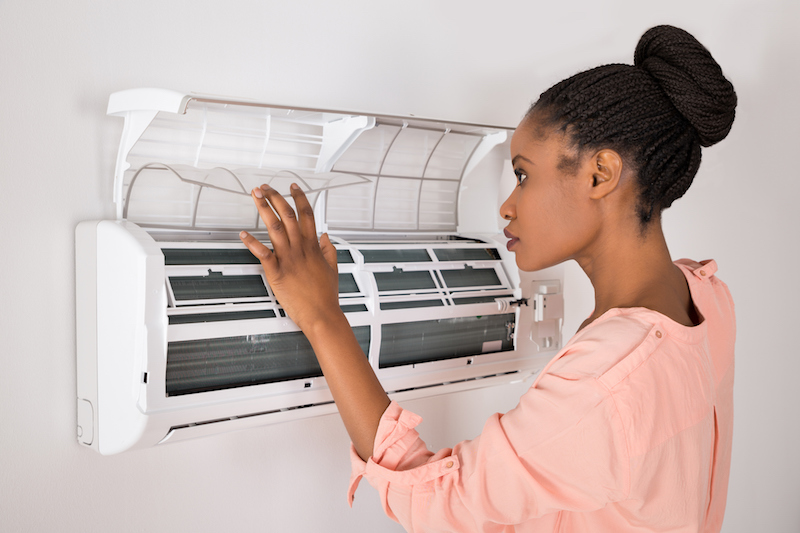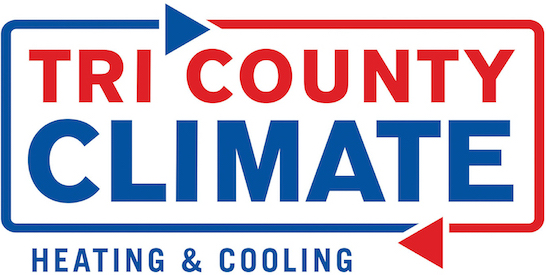
You shouldn’t need to sacrifice comfort or drain your wallet to keep your residence at a pleasant temperature during the summer.
But what is the ideal temp, exactly? We go over suggestions from energy experts so you can determine the best setting for your loved ones.
Here’s what we advise for the most energy-efficient setting for air conditioning in Bend.
Recommended Thermostat Settings for Summer
Most people find setting the thermostat at 72-73 degrees is most comfortable. However, if there’s a sizeable difference between your indoor and outdoor warmth, your electrical expenses will be higher.
These are our recommendations based on the U.S. Department of Energy (DOE) and ENERGY STAR®.
While at home: 78 degrees. While that seems too high, there are methods you can keep your home refreshing without having the air conditioning on all the time.
Keeping windows and window treatments closed during the day keeps chilled air where it belongs—indoors. Some window coverings, including honeycomb shades or plantation shutters, are created to deliver more insulation and improved energy efficiency.
If you have ceiling fans in your home, the DOE says you can raise thermostat temperatures about 4 degrees higher without compromising comfort. That’s since they refresh through a windchill effect. As they cool people, not rooms, turn them off when you move from a room.
If 78 degrees still feels too warm initially, try conducting a test for about a week. Start by increasing your temperature to 78 degrees while you’re at your residence. Then, steadily decrease it while adhering to the tips above. You could be amazed at how comfortable you feel at a higher temperature setting.
While away: 88 degrees. There’s no reason to keep the AC running all day while your residence is empty. Moving the temp 7–10 degrees hotter can save you anywhere from 5–15% on your electricity bills, according to the DOE.
When you arrive home, don’t be tempted to put your thermostat under 78 to cool your home more quickly. This isn’t effective and usually produces a bigger cooling expense.
A programmable thermostat is a useful method to keep your settings under control, but you need to set programs. If you don’t use programs, you might forget to raise the set temperature when you leave.
If you’re looking for a convenient remedy, think over installing a smart thermostat. This thermostat works with with your phone, so it knows when you’re at your house and when you’re out. Then it instinctively adjusts temperature settings for the best savings. How much exactly? Usually $180 yearly on heating and cooling, according to ENERGY STAR.
Another perk of getting a smart thermostat? You can use your phone to keep an eye on and regulate temperature settings from nearly anywhere.
While sleeping: Around 70 degrees. While ENERGY STAR suggests 82 degrees, that might be unpleasant for the majority of families. The majority of people sleep better when their sleeping area is chilled, so that’s why the National Sleep Foundation suggests 60–67 degrees. But that may be too chilly, depending on your pajama and blanket preference.
We recommend running a comparable test over a week, setting your temperature higher and gradually lowering it to choose the right temperature for your residence. On cool nights, you might learn keeping windows open at night and using a ceiling fan is a preferable idea than running the AC.
More Approaches to Conserve Energy During Warm Weather
There are added methods you can save money on utility bills throughout hot weather.
- Get an energy-efficient cooling system. Central air conditioners only work for about 12–15 years and lose efficiency as they become older. A new air conditioner can keep your residence more comfortable while keeping cooling costs down.
- Book regular air conditioner maintenance. Annual air conditioner maintenance keeps your system working smoothly and could help it operate more efficiently. It may also help lengthen its life span, since it helps professionals to discover small issues before they lead to a major meltdown.
- Change air filters often. Read manufacturer instructions for replacing your air filter. A dusty filter can lead to your system short cycling, or turn on and off too much, and increase your electrical.
- Inspect attic insulation levels. Nearly 90% of homes in the USA don’t have proper insulation, according to the Insulation Institute. Many southern climates require 13–14” of attic insulation, while northern climates should have 16–18”.
- Have your ductwork inspected. Ductwork that has loosened over time can seep conditioned air into your attic, walls or crawl space. This can create huge comfort issues in your residence, like hot and cold spots.
- Seal cracks, doors and windows. Keep humid air where it belongs by closing openings. You can also caulk or weather strip doors to trap more conditioned air inside.
Use Less Energy During Hot Weather with Tri County Climate Control LLC
If you are looking to save more energy during warm weather, our Tri County Climate Control LLC pros can assist you. Reach us at 541-238-2797 or contact us online for more information about our energy-saving cooling products.

